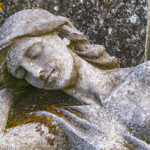Memorials Tributes: Honoring Lives and Preserving Legacies
In the realm of human existence, time is an ever-flowing river, carrying away moments, memories, and lives. As the years pass, it becomes increasingly important to commemorate the lives of those who have shaped our world, leaving behind imprints that continue to inspire generations to come. Memorials and tributes serve as powerful reminders of the impact individuals have had on society, celebrating their achievements, preserving their legacies, and offering solace to those left behind.
The Purpose and Significance of Memorials
Memorials are physical or symbolic structures that serve as lasting reminders of important events or to honor the memory of individuals. These structures come in various forms, ranging from statues and plaques to buildings and parks. They serve as focal points for remembrance, providing a tangible connection to the past and allowing future generations to reflect on the sacrifices and accomplishments of those who came before them.
The Emotional and Therapeutic Role of Memorials
Memorials play a vital role in the grieving process, offering solace and comfort to those who have lost loved ones. They provide a sacred space for remembrance, allowing individuals to honor their departed friends, family members, or colleagues. Visiting a memorial can evoke powerful emotions, helping individuals navigate their grief and find closure. Whether it is the serenity of a beautifully landscaped garden or the grandeur of a towering monument, memorials have the power to heal and bring a sense of peace.
As I stood before the memorial dedicated to fallen soldiers in a small town park, memories of my late grandfather, a World War II veteran, came flooding back. The names etched in stone represented more than just a list; they represented lives lost and families forever impacted. The memorial acted as a conduit, bridging the gap between the past and present, reminding me of the sacrifices made for our freedom.
Tributes: A Personal Touch to Celebrate Lives
While memorials are often dedicated to a collective group or event, tributes focus on honoring individual lives. These personal gestures can take many forms, such as dedicating a scholarship, establishing a foundation, or creating a work of art. Tributes provide an opportunity for loved ones to leave a lasting legacy, ensuring that the impact they made during their lifetime continues to benefit others.
When my dear friend Sarah passed away, her family decided to create a tribute by establishing a foundation in her name, supporting causes she was passionate about. The foundation funded scholarships for underprivileged students, enabling them to pursue their dreams of higher education. Sarah’s tribute not only celebrated her life but also empowered others to follow in her footsteps, creating a ripple effect of positive change.
Preserving Legacies for Future Generations
Memorials and tributes are not merely about the present; they are also about leaving a lasting imprint for future generations. By commemorating the past, we ensure that the stories, achievements, and struggles of those who came before us are not forgotten. These legacies serve as valuable lessons, inspiring and guiding individuals as they navigate their own journeys.
In a digital age where information can be lost or easily distorted, physical memorials and tributes hold a special significance. They serve as tangible connections to history, allowing future generations to touch, feel, and experience a piece of the past. Whether it is a museum dedicated to an influential artist or a memorial park celebrating the perseverance of a community, these physical manifestations ensure that legacies endure.
In summary, memorials and tributes hold a profound purpose in our society. They provide solace to those who grieve, preserve legacies for future generations, and celebrate the lives of individuals who have made a lasting impact. They act as bridges between the past and present, reminding us of our collective history and the lessons learned along the way. Whether through a grand monument or a personal tribute, these acts of remembrance ensure that the stories of those who have shaped our world are never forgotten.













